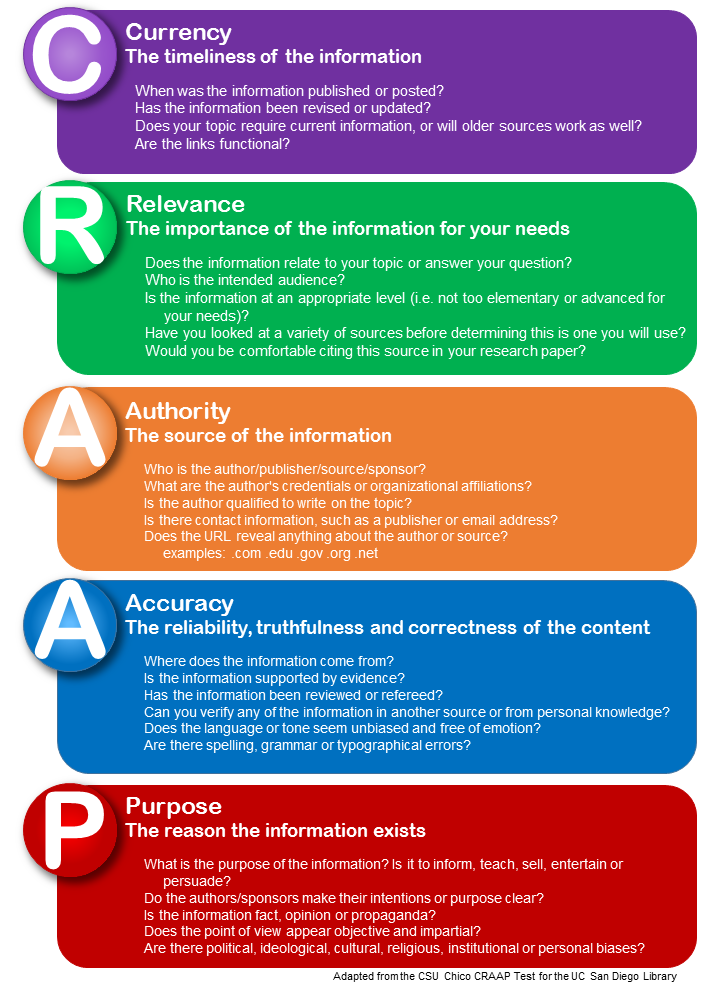
Helping Students Become 21st-Century “Crap Detectors”
It's Not Only About the Top Google Results: Lessons in Digital Literacy to Evaluate Reliable Online Sources
Recently I noticed that some of my graduate students were sharing questionable sources in their online discussion posts. It’s not that the websites or videos were completely inaccurate or unreliable. In fact, many students posted peer-reviewed scholarly sources about philosophy and education that contributed significantly to the quality of discussion. But others posted user-generated content from sites like YouTube and SlideShare without considering the authority of the sources, probably because these sites appeared near the top of Google’s search results. In order to determine the reliability of online sources, students of all levels, from P-16 and beyond, need lessons in digital literacy and “crap detecting” for the twenty-first century.
Fifty years ago, in their book Teaching as a Subversive Activity, Neil Postman and Charles Weingartner argued that “crap detecting”--a term borrowed from a mid-century Ernest Hemingway interview--should be an “essential function” of schools, so students can identify and challenge “misconceptions, faulty assumptions, superstitions, and even outright lies’ (p. 3). Schools must cultivate skills and knowledge to help students recognize and react to changes in society, especially changes involving communication and technology. In 1969, Postman and Weingartner were preoccupied with the impact of television on society and education, but their warnings displayed an uncanny prescience for the problems that the current digital age poses:
What you have is a totally new environment requiring a whole new repertoire of survival strategies. In no case is this more certain than when the new elements are technological. Then, in no case will the new environment be more radically different from the old than in political and social forms of life. When you plug something into a wall, someone is getting plugged into you. Which means you need new patterns of defense, perception, understanding, evaluation. You need a new kind of education (p. 7).
This “new kind of education” that the authors suggested requires teachers to focus on media literacy and technology’s impact on society. Today’s digital media environment presents unique challenges to educators and students, who might struggle to keep pace with evolving technological advancements. One way to integrate digital media literacy into all levels of education--and to teach students to become proficient “crap detectors” in the digital age--is to employ the CRAAP Test.
An acronym that helps students determine the reliability of online sources, the CRAAP Test was developed in the early 2000s by librarian Sarah Blakeslee and her colleagues at California State University, Chico. The CRAAP Test asks students to answer a series of questions about an online source to evaluate its Currency, Relevance, Authority, Accuracy, and Purpose (see image below). These questions help students hone their digital literacy skills, which, according to the American Library Association, require “the ability to use information and communication technologies to find, evaluate, create, and communicate information.”
Educators must foster these cognitive and technical skills through careful and purposeful instruction. A recent study by Stanford education researchers found that most middle school, high school, and college students could not accurately identify fake news stories online. According to Professor Sam Wineburg, the study’s lead researcher, in order to detect fake news and other unreliable information online, students must learn to read like fact checkers. Wineburg told NPR, "The kinds of duties that used to be the responsibility of editors, of librarians now fall on the shoulders of anyone who uses a screen to become informed about the world." In other words, students must learn to become “crap detectors” for the digital age, and the CRAAP Test, along with other freely available resources on digital media literacy, help provide the necessary skills for students to become literate in the twenty-first century.


